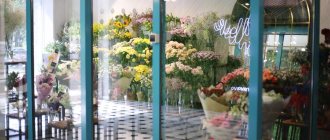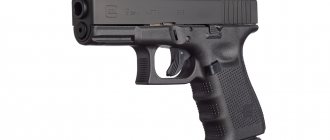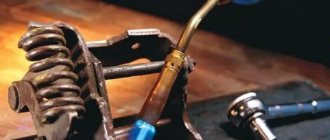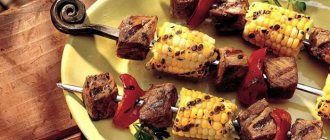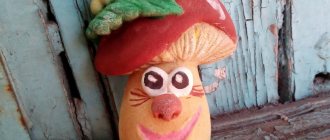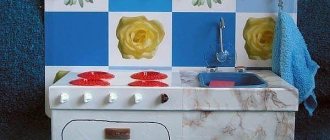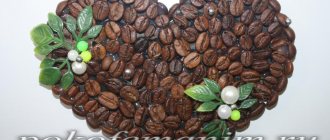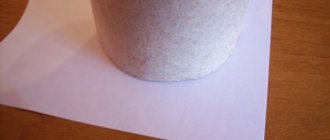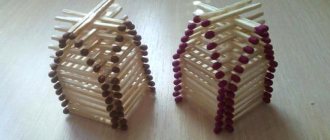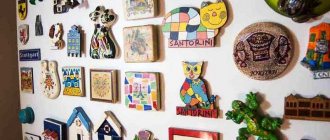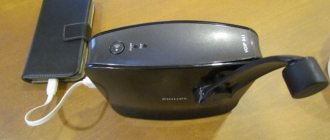Dmitry Bizyukov Founder of the chain of flower salons "Foliage"
Dmitry Bizyukov
Founder of the chain of flower salons "Foliage"
The design of the window display and the arrangement of bouquets on it directly affects the sales of the street point. This is the first detail that a client pays attention to when he enters a flower shop. With the right approach, the refrigeration chamber can be made the main competitive advantage of the store.
We will talk with the owner of the Listva chain of stores, Dmitry Bizyukov, on how to improve a refrigerated display case.
We make display cases for a collection of anything ourselves
We offer several such display cases. A box with lighting can be installed on a coffee table (see Fig. 1). Make the box itself using chipboard scraps, veneered or covered with synthetic film.
The exhibits are placed on frosted glass, under which fluorescent lamps are placed, and covered with transparent glass on top. Frosted glass is placed on the console, and transparent glass is inserted into the groove, which is formed by a baguette glued to the walls.
The assembly diagram is shown in Figure 2. It is more convenient to do it this way. Drill holes for wooden pins in the prepared ones. Apply glue to the parts that form the corner and insert the rods into the holes. Attach the other walls in the same way. Press them tightly together. Use a square to check if the corners are right. And fix it crosswise with two slats until the glue dries. The frame support is made in the same way. When assembling, strengthen the support bars inside the box to support the matte screen. To do this, drill holes with a diameter of 2.5 - 3 mm in the places where the screws are installed in the bars. Secure the bars. Insert and secure with screws. Install the bottom using thin screws. It contains 3-4 fluorescent lamps with a power of 20 W and a starter. Connect the wires to them, connect the lamps to the throttle and starter and check their operation. All that remains is to cut out two rectangular glasses. Place frosted glass on the support bars above the lamps, and cover the entire structure with transparent glass.
But before assembly, do not forget to carefully finish all the parts. Sand the surfaces with sandpaper. Rub with wax or mastic, or even better, cover with 2 - 3 layers of furniture varnish, leveling each previous layer with fine sandpaper.
Another showcase will serve to display a collection of tin soldiers, car models, and other similar items.
Prepare several well 20 mm thick and 150 - 200 mm wide, a sheet of hardboard, wooden slats and two glasses - frosted and transparent, according to the dimensions indicated in the figure. Frosted glass will go on the vertical wall covering the lamps, and shelves and front sliding halves of the display case are cut out of transparent (window) glass (Figure 3).
The assembly sequence is as follows. Cut grooves in the vertical walls. It is quite difficult to perform this operation manually, so prepare a template in advance and practice on some unnecessary board. The template consists of two metal strips or corners in which grooves are cut with a width corresponding to the thickness of the shelf. Using two clamps, the templates are attached to, and with a hacksaw (the width of the teeth must correspond to the thickness of the glass), cut the recesses in the selected places.
Traditionally - on spikes. The vertical walls are fastened with screws. 3 fluorescent lamps with a power of 20 W each are installed on a hardboard board and covered with frosted glass. You can, of course, place it directly on the wall, but this will require drilling holes. And that's not so bad. When the need arises to move the display case, you will have to drill new ones and seal the old ones.
Glass shelves, like outer glass, are inserted when the display case is fixed. All that remains is to place the exhibits and install sliding windows. Remember that heavy objects can crush a glass shelf, so do not overuse it.
These display cabinets and bookcases share a common basic cabinet element. If desired, a home craftsman can decorate one of the rooms of his apartment with a piece of furniture he likes.
Any of the two items under consideration is fully consistent with modern trends in furniture making. The combination of natural wood color and black trim details characterizes their design. The ash panel details beautifully frame the dark shelves and give the product a noble touch. Such a cabinet largely determines the character of the interior.
A simpler product is a bookcase. Its appearance is quite austere. This impression is reinforced by intermediate shelves made of natural wood.
The design of a display cabinet in comparison with a bookcase is more complex, since it contains some additional elements - three drawers, two glass doors at the top of the cabinet, a triangular cornice. In addition, here it will be necessary to install lighting using halogen lamps and place a step-down transformer behind the eaves.
The display part of the display cabinet is closed with two glass doors. At the bottom there are three large drawers with wooden front panels.
The bookcase design with light wood details is characterized by strict, clean lines.
Recommendations for use
Before using plexiglass, you need to familiarize yourself with the basic recommendations for its use:
- If there is a need for drilling, then metal helical drills are acceptable.
- The surface damaged by scratches will be restored by sanding with fine, damp sandpaper.
- When processing, it is necessary to firmly fix the sheet and not apply strong pressure.
- Treatment with a special antistatic agent reduces the accumulation of dust on the surface.
- In case of water deposits or the formation of persistent contaminants, a nylon brush is used.
- Processing the material with ammonia, solvents, and alcohol solutions is unacceptable. These actions will lead to cloudy formations and defects.
Specifics of glass cabinets for bathrooms
A glass bathroom cabinet has a lot of properties:
- Unusuality. The original appearance is associated with the transparency of the material. Ideal for any style;
- Long service life. If the glass is not subjected to overloads and shock influences, then its service life is unlimited;
- Neutrality. The material has absolutely no contact whatsoever. It does not absorb water, is not afraid of heat, and tolerates washing with household chemicals;
- Eco-safety. Complete absence of reactions with the external environment. Does not release any toxins;
- The ability of glass to transmit and diffuse light will make the bathroom brighter;
- Does not require special care;
- A huge number of finishing options allow you to give the glass a completely original look.
What is the best material to build a kiosk from?
Reply to a message from user krsmir I think that the information I asked for was given behind the scenes. I’ll write again: The building is a pavilion, a temporary structure, not permanent. Easily erectable. Location - Leninsky district, I named the dimensions, wrote that I was interested in the cost without communications and finishing. By “turnkey” I meant only the walls, roof, etc. Electricity and water supply are my problems. I have the money, otherwise I don’t see the point in asking questions. I don’t want to announce the budget so that they don’t adjust the estimates to fit this budget. If, as you write, you have already built these pavilions, then I am surprised that you cannot estimate the cost approximately.
Installation of glass doors
For lightweight glass doors (as in this case), you can use screw clamp hinges. Larger doors should be hung on screw-on hinges. To do this, you need to drill holes in the glass (preferably in a glass workshop) to attach the hinges.
It is best to cut the wood slab with a hand-held circular saw with a rip fence or along a guide rail.
Four holes for shelf holders are drilled in the side walls at several levels. An electric drill is installed on a drilling fixture.
The side walls are glued together from two wood slabs through bars with a cross-section of 20x20 mm. If desired, instead of ash decoration elements, you can use beech or pine.
Each of the load-bearing side walls of the basic structural element consists of two veneered wood boards (or chipboards) with bars glued between them with a cross-section of 20x20 mm. The inner plate of the side walls is 10 mm narrower than the outer one, due to which a kind of fold is formed on the back side, allowing the rear wall to be installed flush with the rear edges of the outer plates of the side walls. The front edges of the walls are covered with platbands, which are fastened as follows. A block is glued to the back side of the platband, which is then glued between two slabs forming the side walls. The platbands are attached only after finishing the body elements.
The housing cover is secured on top with screws (three screws on each side). Holes for screws must be drilled strictly in the middle of the edges of each of the inner plates of the two-layer side walls.
Before starting to assemble the cabinet, all parts of its body are first finished with black stain using a wide brush, then sanded, treated with primer and finally varnished.
The base of the cabinet is assembled from three parts, which are sawed down and secured from below with screws. The bottom is attached from above to the side support bars. The back wall is inserted into the “rebate” and secured with screws.
Vertical trims are installed after finishing. Having applied glue to the contacting surfaces, insert the bars attached to the platbands from the back side between the side wall plates and tighten these elements with large clamps.
A wooden shelf separates the upper, display part of the cabinet from the lower part with drawers. This shelf is mounted secretly on support bars screwed to it from below. Drawers move along telescopic guides attached to the side walls.
Large drawers of the display cabinet. Narrow strips of light wood, finished with furniture wax or clear varnish, contrast effectively with dark drawer fronts.
To make a display cabinet (or bookcase) look really beautiful, you should choose the right materials necessary for its manufacture. In this case, the side walls of the cabinet are made of 19 mm thick wood board, veneered. The cabinet lid and drawer bodies are made from the same material.
All front parts (drawer panels, platbands and triangular cornice), as well as the bottom and shelves, are cut out of 18 mm thick ash wood board. For the back wall, plywood with a thickness of 10 mm is quite suitable.
Glass doors and shelves (glass thickness - 6 mm) are best cut in a glass workshop. Here their edges will be sanded.
Fittings: 6 telescopic guides for drawers; 4 hinges for fastening glass doors.
Before finishing, the cabinet is assembled to assess the correct fit of the elements, and then disassembled. All panel parts and drawer fronts are stained black, sanded, primed and coated with a clear matte varnish. The final assembly of the cabinet is carried out after finishing its elements.
Make two pull out trays
W from 18 mm boards X from 12 mm boards . We used poplar wood. Then, to form the connections (Fig. 7 and 7a), follow the three-step operation (Fig. 8). Cut out the tongues to insert the bottom Y.
2. Cut a Y for each of the trays. Dry assemble the trays to check the fit of the parts. Disassemble them and sand the bottom, as well as the inner sides of all walls W, X. Glue the trays together and make sure they are square. Once the glue is dry, sand the outside of the trays.
Z
support strips for the pull-out guides. Glue two of them to the uprights of the side frames A and the front frame I in the inner front corners of the body (Fig. 9). At the rear of the chassis, position the support bars so that they line up with the last mounting hole in the ball slides. Glue the rear supporting strips to the rear side pillars, securing them with clamps.
Natural wood finishing
Instead of clear varnish, wooden parts can be coated with liquid furniture wax, which is applied with a brush and rubbed with a swab.
The chinchilla is a touching and sweet creature that needs a lot of care and attention. The life expectancy of the animal directly depends on how well it is cared for and how comfortable its living conditions are. Zoologists advise keeping chinchillas in a special display cage.
We have collected tips on how to make a showcase yourself and how to arrange it in this article.
A display case for a chinchilla today is a more popular option for keeping an animal than a cage, although it is more expensive in terms of price and care. In order for an animal to feel comfortable and protected, it needs its own closed home.
And the showcase is best suited for these purposes. It is spacious, looks very beautiful, unlike, for example, a metal cage, and can be made of various materials, including natural ones. Chinchillas really like such corners, especially those made of wood.
A showcase has several advantages over a cage:
- It creates less noise.
- No debris spills out of it.
- It's easier to clean.
- It looks more interesting in the interior - you can, for example, choose a color to match the furniture in the room.
- When installing the enclosure on wheels, it can be moved to any corner of the room, for example, when rearranging furniture.
Among the disadvantages of a wooden display case is the absorption of odor and moisture, which makes it short-lived. Display cages are made from the following materials:
Consider how to drain condensate
In one of the stores, we made a mistake in the design and brought the condensate pipe directly inside the refrigerator. Now florists have to collect the moisture that forms in the refrigerator in a bucket.
This is an additional headache for employees: every day they must remember to drain the condensate. If this is not done, water may spill onto the floor and this will have a detrimental effect on the flowers. Plus, it spoils the aesthetics of the store: no one wants to look at a pipe with flowing water.
To avoid these problems, consider a condensate drain in advance. It is advisable to place the refrigerator next to the room where the sewage system is located, for example, near the toilet or technical room. If the sewerage system is located far away, you will have to lay a separate pipe to remove moisture and install an additional compressor. In any case, it will be better than if the water collects inside the refrigerator.
Prevention and care of display cases
Cosmetic cleaning including washing the toilet, drinking bowl, and feeder must be done daily. If there is no tray, the litter should also be changed daily. If the chinchilla is litter box trained, the bedding is changed once a month.
Video: how to clean a chinchilla's window display
General cleaning is done once a week. In order to do it, the chinchilla needs to be removed from the enclosure and placed in a carrier. Then remove all loose objects: house, tunnels, etc.
Did you know?
To scare the enemy, the chinchilla stands on its hind legs and shoots a stream of urine at it.
And if a predator grabs her, she can shed scraps of fur in order to escape. After this, you can start cleaning up the debris using a vacuum cleaner. Then wash the bottom of the display case with a weak soda solution and a sponge, and wipe the floor dry.
Side walls and doors should be wiped with a damp cloth and also wiped dry. All items that were in the middle of the display case should be thoroughly washed, dried and placed in their places.
If you need to disinfect the room, you will need to use special products purchased at a pet store.
Surely most chinchilla owners purchased it in order to be touched by this fluffy creature. Therefore, each of the breeders is simply obliged to repay the pet with a good attitude, quality care and the creation of comfortable living conditions. After all, the life expectancy of an animal directly depends on these factors. A home for a chinchilla in the form of a display case can be either purchased or made with your own hands. To make your pet feel comfortable in it, it is important to follow the recommendations for its area and arrangement.
The success of trade is not only a quality product, but also the ability of the seller to present it in the most attractive way. A variety of display equipment can help in this matter.
You can get acquainted with the assortment of display cases and order the option you like on the website: https://otilos.ru/trade-equipment-saratov/. What kind of commercial equipment is there? What materials are used to make it, and which material is preferable?
Step-by-step manufacturing instructions
Hand-made furniture products appear mainly in kitchens of non-standard or small sizes. Sometimes it is difficult to find a suitable option on sale. Instead of searching for the desired design, it is faster and cheaper to make it yourself.
Step 1. Select a style
Recommendations from professionals for selecting a style concept:
Kitchen in Provence style
In addition to the fact that all modules are combined with each other in a cozy kitchen, they are endowed with extreme functionality.
Cabinet parameters should correlate with the size of the room
Step 2: Choosing a Shape
A large kitchen requires the installation of several cupboards. In small-sized ones they resort to all sorts of tricks. The dishes are placed as follows:
Recently, preference has been given to mounted modules.
Table 1. Main varieties for placing dishes
In most cases, the cabinet is equipped with the following options:
Transparent glass doors
The solid back can be replaced with a tie strip. If the corner model is used as a sink cabinet, this element is skipped.
In addition to the listed details, almost any module has a façade. Popular options:
A popular model in small kitchens is a cabinet with a shelf in the form of a carousel.
Stained glass doors are often installed in tall modular structures
General recommendations for choosing a form:
For small kitchens, corner cabinets with built-in rotating storage systems are popular.
Hanging structures should not be overly massive
Step 3. Drawing up a drawing
To correctly calculate the dimensions of the future cabinet, knowledge of the standards is required. Thanks to many years of experience, kitchen furniture manufacturers have developed a scale of optimal sizes.
Source
Types of models
The models differ from each other in shape and size. There are several key types:
In the next article we will talk about the topic of a photo cabinet built into a photo wall. Let's try to describe this topic in more detail.
- Floor-standing. They can be ceiling-mounted or shortened (without the top part). Height ranges from 72 to 210 cm. Recommended width can vary between 30 – 40 cm;
- Wall. In this case, the standard height dimensions do not go beyond 72 cm. The width ranges from 30 (narrow) to 80 (elongated) cm;
- Angular. The average parameters for them do not differ from other species.
The recommended depth for all glass cabinet options is 25 - 28 cm. Deeper options usually create problems with the placement and fastening of shelves.
Glass cabinets are an excellent option for creating a unique, original bathtub design. At the same time, the quality of storage of things is maintained at height. If handled correctly, the cabinet will serve you faithfully for a very long time.
DIY bathroom cabinet with mirror with LM part 2
Cupboard for kitchen utensils: model options, installation features, installation
Proper placement of kitchen utensils in conditions of shortage of square meters is a burning issue for most housewives. In addition to the tabletop, a compartment for storing household utensils is endowed with great functionality. A kitchen cupboard is considered both a good pantry and one of the main interior accents. If you need to install a design that is atypical for a store’s assortment, we offer a detailed algorithm for creating it.
Cupboard for kitchen utensils
Types of showcases
Commercial equipment such as display cases and counters are the most common and in demand. The vast majority of stores use this type of equipment to organize their work.
All showcases can be classified according to various criteria:
products made from chipboard and glass - the “classic” option, inexpensive and practical; glass showcases - such equipment, on the one hand, allows you to demonstrate the product from all sides, on the other hand, it is quite fragile and not resistant to mechanical damage; metal commercial equipment – strong and durable; combined products consisting of chipboard, metal profile and glass - an excellent option, durable, strong and easy to assemble;
rectangular; trapezoidal; round; corner;
- location in the sales area:
wall-mounted – installed along one or several walls; island – standing separately in different parts of large trading floors.
Choosing a site for a pavilion
Many novice businessmen do not know how to set up a pavilion in the city. To organize a trade pavilion, you will first need to choose a suitable location. This step is extremely important as a kiosk located in a good location will bring more profit. It is better to give preference to places near residential buildings and major roads.
It is also advisable that there are no supermarkets nearby; most buyers will go there. But if the store being built will sell fresh fruits or vegetables, there is no need to fear competition from large buildings.
For a small kiosk selling food, an excellent solution would be a site in the courtyard of a residential building away from shops. The people living there will be grateful and all the costs of building the kiosk will be recouped in the shortest possible time.
Pros and cons of the design
What advantages, besides beauty, does a glass table have? It is easy to care for: a household mirror cleaner will do. Glass is one of the few materials that does not absorb odors, and there are no permanent marks left on its surface from drinks or hot objects.
The glass table is easy to care for.
Transparent or painted countertops will not fade, even in direct sunlight. The only drawback is the need for polishing. If high-strength glass was chosen to make the table, then the product is unlikely to break under the influence of normal mechanical loads.
Source
Rent of land for a trade pavilion
How to rent land for a pavilion? This is a rather difficult and painstaking task; you will need to be patient. Often the land on which the pavilion is planned to open is owned by the state or municipality. So it can only be rented. To do this, you will need to make a request to the city department of consumer services and trade or to the district committee of public domains.
Renting land for a trade pavilion is only possible if the businessman is registered as an individual entrepreneur or acts on behalf of an LLC. Therefore, first you will need to purchase one of these statuses. After which the procedure will be as follows:
Interesting Facts! The process of leasing a plot of land for a retail pavilion can be significantly simplified. To do this, you will need to purchase a plot of land on any market, then all the documentation will be collected by its owners, and the businessman will act as an ordinary buyer. You can also rent a plot from a private entrepreneur, and not from the state, this will significantly simplify and speed up the opening of a trade pavilion.
Refusal to rent
If the rental request received a negative response, you will need to clarify what is the reason for the refusal. Most often, the reasons for this are the following:
If such a situation arises, you can go to court or change your plans for choosing a land plot. The second solution will allow you to arrange the trade pavilion as quickly as possible.
Plexiglas: how to cut?
In some cases, the use of a saw is allowed. It can be tape or disk. The latest type of saw is designed for straight cuts. In this case, the seam is neat and clear. As for it, it is suitable for making blanks. It is unlikely that it will be possible to cut clear edges with such a tool. To make the surface smoother, it is recommended to use a milling cutter.
It is worth noting that this method of cutting plexiglass can be used not only in production, but also at home.
Assembly of body parts
Glue the A/B/C/D side pieces together using 51mm spacers to fit and align the top and bottom rails B. Photo shows the bottom.
1. Cut panels D
and give them a final sanding.
Dryly (without glue) connect the lower and middle crossbars B, C
with two posts
A
to check the fit of the joints.
Then, from a piece of 18 mm thick cutting, cut out two spacers 51 mm wide, the length of which is equal to the distance between the hangers of the crossbars. Now glue the sidewalls, securing them with clamps (Fig. 1),
installing spacers on top and bottom to align the crossbars
B (photo B).
Make sure the assembly is square.
2. Insert a 6 mm wide rebate bit into the router collet and select the rebates for the bottom
and the upper
L
of the rear walls on the inside at the rear edge of both sidewalls
(Fig. 1).
After making one pass with the 6mm rabbet router, replace it with a 12mm one and remove the remaining material using the climb router method.
3. Having removed the tongue wall on the inside of the assembled sidewalls, make folds for the glass and glazing beads E
.
To avoid chipping, use a rebate bit with the same settings as in the previous step. Place the side panel on the workbench with the inside facing up. After making sure that the cutter bearing rests on the bottom (outer) wall of the tongue and does not touch the surface of the workbench, remove the entire inner wall of the tongue. If necessary, place scraps of boards under the sidewall to create a gap between the cutter bearing and the workbench. Having securely fixed the assembly with clamps, confidently hold the router in order to carefully remove first half of the wall with a cross-section of 6 × 12 mm using the down milling method. Then use a 12mm rabbet cutter (or a smaller diameter replacement bearing) to complete the rabbet (Photo C).
Trim the corners with a sharp chisel.
4. If you are making a display cabinet with shelves, mark the centers of the holes for the shelf supports, as shown in Fig.
1s. With the 6mm drill bit secured in the drill press chuck, set the stop so that the drill axis is aligned with the centers of the holes. Drill holes, using additional support to support the part of the sidewall protruding beyond the edge of the drill table.
5. Cut out blanks for glazing beads E
.
Shorten the four blanks for the side beads to the final length (Fig. 1),
and use the remaining blank to make the top and bottom beads. Drill through holes in the glazing beads using a thin finishing nail with a broken head instead of a drill. Finish sand the glazing beads.
6. Cut out the panels H
for the lid, shelf and bottom according to the specified dimensions and finally sand them.
Pre-check the fit by dry assembly, and then glue three identical F/G/H (Fig. 2).
Make sure the glue is square.
Using clamps, secure the plywood template to the assembled sidewall, move the lamellar router towards it, align the central marks and mill out the slots.
7. Make a template from 19 mm plywood (Fig. 1a)
for positioning the lamellar router when selecting nests in the sidewalls and marking the same nests on the edges of the lid, shelf and bottom.
Mill out the sockets for attaching the bottom and shelf (Fig. 1, photo D ).
Then fix the edge of the template at a distance of 70 mm from the top of the
A
and make sockets for the cover. Finish sand the sidewalls without touching the edges of the front pillars, so that later there are no gaps between them and the front frame.
8. Using the template, mark the centers of the nests on the edges of the lid, shelf and bottom. Adjust the stop of the lamellar router so that the nests are located in the middle of the thickness of the parts. Mill out the sockets (Fig. 2).
Finish sand the frame parts. To ensure they fit tightly with other body parts, do not sand their edges.
Classification
There are several types of plexiglass.
- Transparent. Colorless smooth sheets transmitting up to 95% of light. Suitable for etching and engraving. A frame or carved figurine made of this material looks great with an LED garland attached around the perimeter.
- Colored. The material has a uniform color and transmits 20–75% of light, depending on the thickness of the sheet and the saturation of the shade. Such plexiglass can be relatively transparent or matte, softly scattering light. It makes spectacular stained glass windows and lamps. Sheets that transmit minimal light are especially good for night lights.
- Grooved. On one side of the sheet there is a convex pattern. This plexiglass can be either transparent or colored. It is rarely used for crafts.
Plexiglas is a popular material for making various figures
Special equipment
Plexiglas products are cut with a high-speed tool. This allows you to get an even and high-quality seam. The speed of such equipment can be up to 4 thousand revolutions per minute. After this, the plexiglass undergoes additional mechanical processing.
However, do not forget that this material has low thermal conductivity. Cutting at high speeds can cause the edges to heat up quickly. Some instruments have a Plexiglas mode.
Using simple tools
If cutting plexiglass with a laser is an expensive pleasure for you, then you can cut the material using improvised materials. Very often, nichrome thread is used for such work. It needs to be heated before cutting. This will require a transformer with a power of 24 W.
As a result of simple manipulations, you can carefully cut plexiglass. When heated, it simply melts the material. This allows you not only to cut plexiglass, but also to cut out shaped parts.
Also, some craftsmen use this option for cutting plexiglass at home. The end of the screwdriver is usually pressed against the material. In this case, the tool must be held by the very edge of the handle. After this, the blade of the screwdriver is heated with a soldering iron, the power of which is 25 W.
The plexiglass should begin to melt. Using the tip of a screwdriver, simply draw a line in the place where the cut should be. After this, the plexiglass breaks easily. To get a straight line, you can use a metal ruler or a hacksaw blade without teeth.
In addition to the methods described above, you can cut plexiglass with a milling cutter or a circular saw. The thickness of the blade in this case should be no more than 1 mm. It is worth considering that smoke may appear during the cutting process. In this case, the edges of the material often foam due to the increase in temperature as a result of friction. This can be avoided. It is necessary to cool the working surface of the tool.
Crafts made from plexiglass are becoming more and more popular. This beautiful and pliable material is suitable for making figurines, photo frames and other interesting and beautiful things. In this material we will tell you how to make a price tag holder and a phone stand from plexiglass.
Laser cutting of plexiglass
How are plexiglass products made in production? Typically, a laser is used to cut this material. This is the most convenient method. However, it is simply impossible to use it at home. Thanks to the thin laser, a precise cut can be made. Even small parts of future products are usually cut out in this way. However, this cutting method has certain limitations: the laser beam creates high stress on the material. In the future, it is simply impossible to glue individual parts together.
It is possible to cut products from plexiglass only in industrial conditions. If necessary, you should contact the appropriate organization for assistance. The main thing is to make all the drawings in advance. It is also worth choosing an experienced master.
